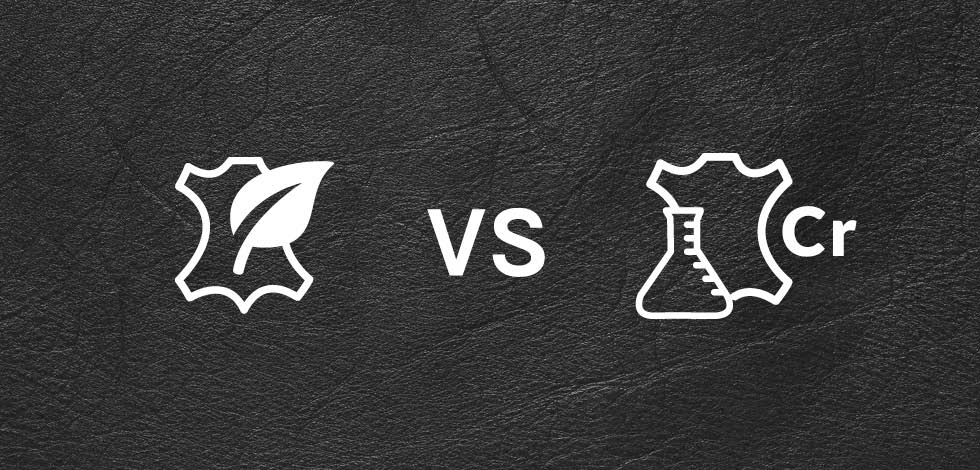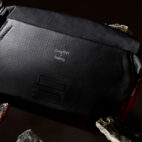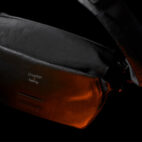Chrome vs Vegetable Tanned Leather
Anders Ojgaard – Managing Director of Waremakers.com – gives us the scoop on the two, often compared and misunderstood, sides of tanning…
The leather that your bag is made of has been tanned. And no, that doesn’t mean that it has been left in the sun to get a bit of color.
Basically, tanning is the process that converts animal skin to leather. How this process is carried out has a significant impact on the qualities of the bag you hope to use for years to come. Will it soften and acquire a patina over time? Or will it be supple from day one and keep its looks over the years?
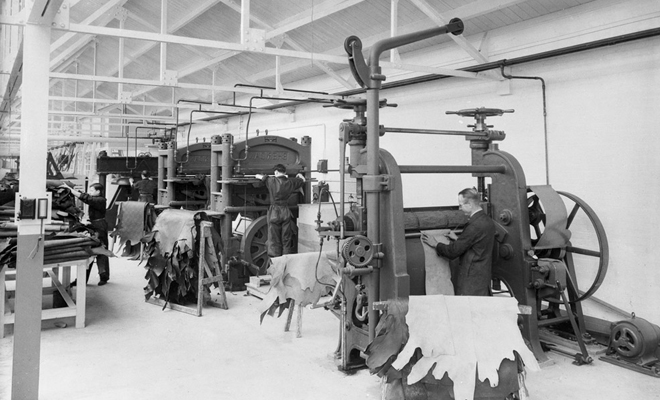
Once an animal skin has been turned into a hide by being degreased and having all its hair removed, the tanning process can begin. An untreated skin would both harden and putrefy as it is an organic material. So, the aim of the tanning process is to prevent this from happening – to turn the hide into leather.
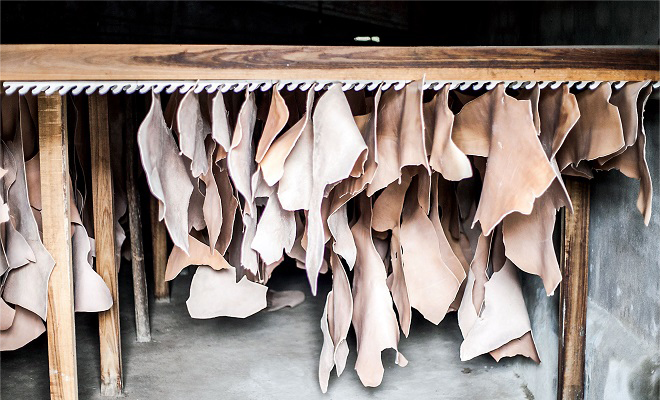
Photo by Honor Kennedy
This is something human beings have been doing for a very long time. Some evidence suggests that leather tanning was performed as far back as approximately 6,000 BCE in the Indus Valley – one of the cradles of modern civilization.
The basic principle has been the same for all these millennia: To modify the protein called collagen, which the skin is made up of. You can actually get a sense of this protein with the naked eye. Collagen molecules like to first line up and then to twist together into “fiber bundles” that you can easily see if you look closely enough at good quality leather.
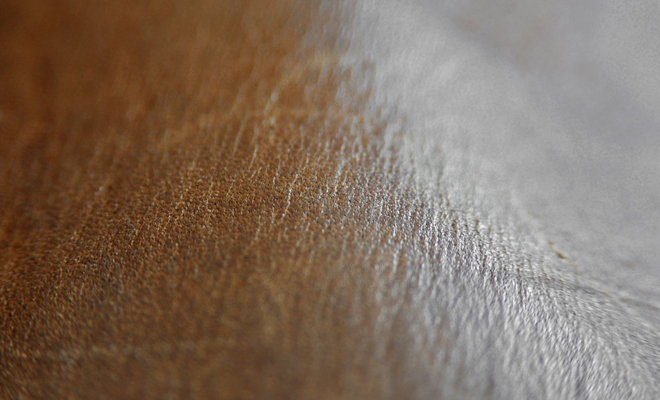
Look closely and on vegetable tanned leathers you will be able to see the collagen fibers that leather is made up of.
What tanning does is leave the skin much less susceptible to hydrolysis – the separating of chemical bonds caused by water – which would otherwise cause its degradation. Tanning modifies the molecular structure of the skin.
Vegetable tanning
For the vast majority of the past thousands of years, this modification has been performed by soaking it in a solution made up of vegetable tannins. These tannins would most often come from trees such as oak, chestnut or mimosa, but hundreds of tree types and other plants have been used. In fact, the word ‘tannin’ derives from an old German word for ‘fir’. So ‘tanning’ has nothing to do with coloring as in getting your kit off and letting the sun brown your skin.
A tannin is a molecule that bonds easily with proteins and will draw liquids out. If you are a red wine drinker, you may have had heated debates over a wine’s ‘tannins’ – the ingredient that makes the wine feel dry in the mouth, sometimes to the extent of making both your tongue and gums feel unpleasantly arid and barren. Just as the tannins in wine come from the skin of the grape, so the tannins in trees are found in the bark.
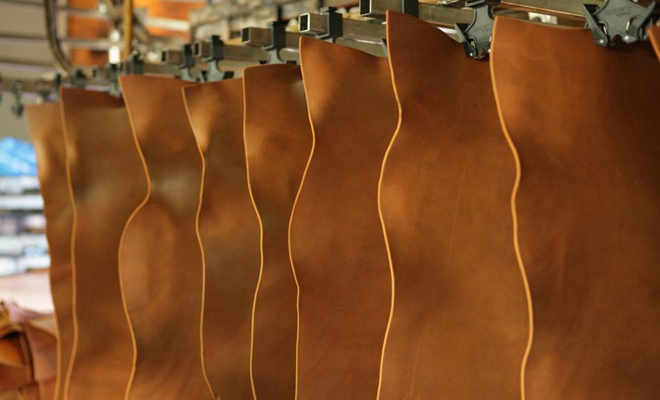
When tanning hides to make leather, the hides are soaked in a tanning solution. The tannin molecules will enter the hide and displace the water that is bound in the collagen. The water is drawn out, but as the tannins take the place of the removed water, the leather does not grow inflexible as fully dehydrated leather otherwise would.
It may sound easy, but it isn’t. The process is complex and the skins require multiple treatments over a period of up to two months in order for the water molecules to be fully extracted and letting the tannin molecules take their places in just the right way. A lot of work from highly skilled craftsmen is involved too.
Mineral (chromium) tanning
The complexity, expense and time involved with tanning with vegetable tannins led, in 1858, to the development of using mineral tanning agents instead. The basic principle is the same, removing water molecules from the collagen and replacing them, but the process is much quicker using chrome which is the most popular mineral tanning agent today. The whole process can be automated and finished in a day, and the chrome ions displacing the water and binding with the collagen are much smaller than vegetable tanning molecules. This generally makes chrome tanned leather thinner and softer than vegetable tanned leather.
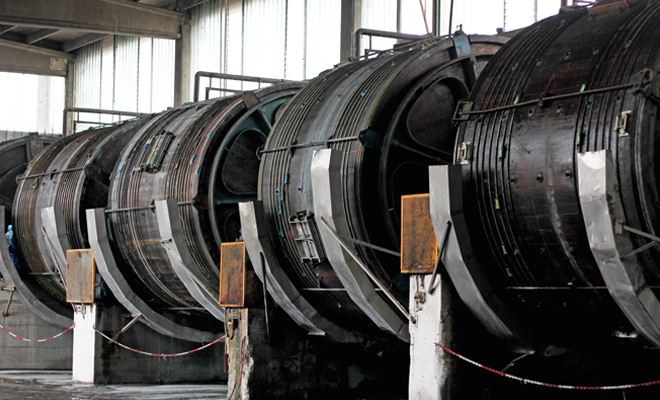
The process, however, is less natural than when using vegetable tannins. It involves first placing the hides in acidic salts to better make the chrome fit in between the collagen molecules – and then returning the hides to a normal pH level.
This requires the use of acids and other chemicals as well as the chromium sulphates themselves. If not properly managed, these will have a negative environmental impact, and the industry continues to be under pressure to “clean up” as more regulations are introduced.
Uses and environment
Vegetable tanned leathers are generally biodegradable, but the tanning process requires the use of more water and more tanning agents than when chrome tanning. Chrome tanned leathers, on the other hand, cannot be recycled as such, but some companies now extract the chrome out of unused leather and resell the chrome to tanneries where it can be used again.
Today no less than about 90% of the world’s leathers are chrome tanned – partly due to the lower cost, but also because chrome tanned leathers are softer and less susceptible to water stains, making them preferable for clothing, such as jackets and gloves, and upholstery for, say, car seats.
Vegetable tanned leather continues to be associated with tradition and craft, but relatively few tanneries today have the capability to produce vegetable-tanned leather. The time and skill involved in its production make it an expensive material, reducing its demand. It is a thick and malleable leather making it ideal for goods like sturdy bags and belts.
Oh, and here’s a handy chart to make things a little easier…
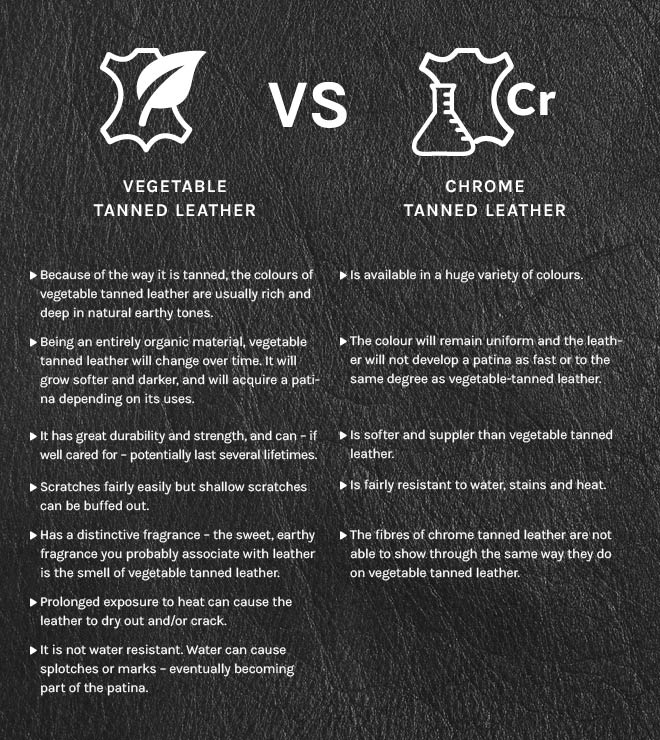





 Carry Awards
Carry Awards Insights
Insights Liking
Liking Projects
Projects Interviews
Interviews
